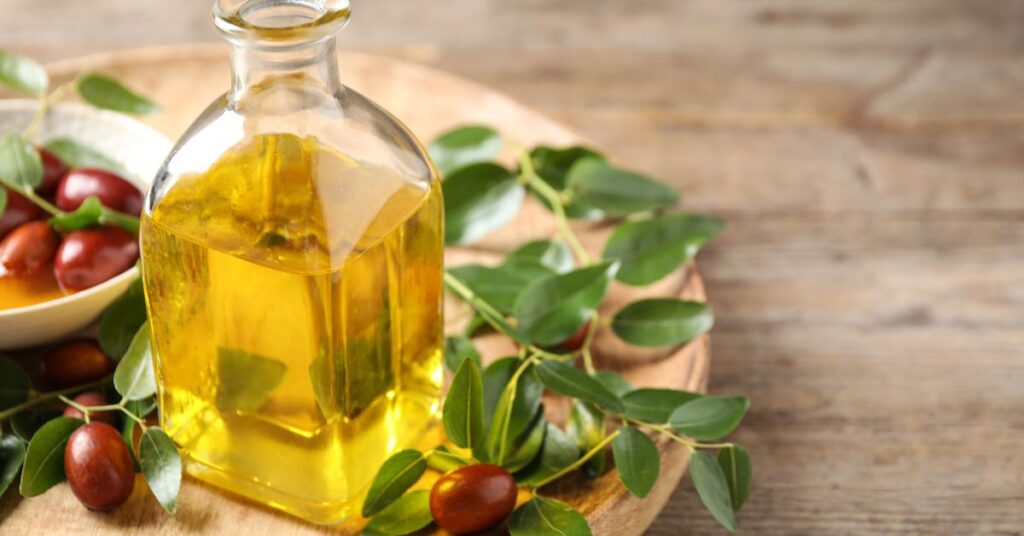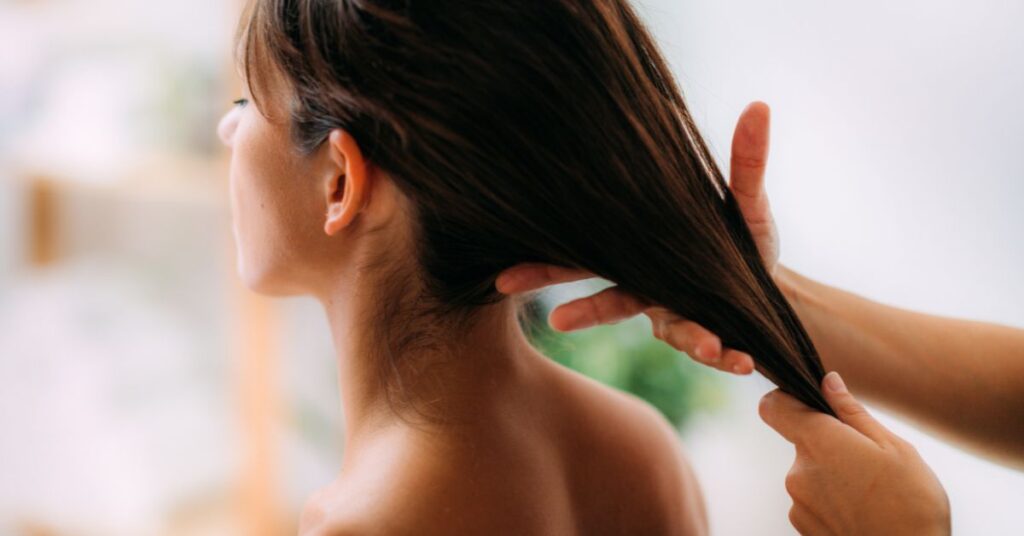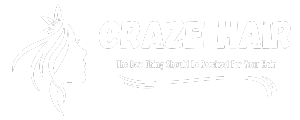
Introduce
Welcome to “Navigating a Month Without Goldie Locks: A Guide to Maintaining Hair Health.” Your hair is more than just strands; it’s a reflection of your overall health and well-being. In this comprehensive guide, we’ll explore essential tips and strategies to keep your hair looking and feeling its best, regardless of your hair type or lifestyle. Whether you’re dealing with dryness, frizz, or simply seeking to enhance your hair’s natural beauty, this article will equip you with the knowledge and tools needed to achieve healthier, more vibrant locks.
Understanding Hair Basics
1. Hair Structure and Composition:
Hair is composed primarily of a protein called keratin, which forms the shaft of each hair strand. The hair follicle, located within the skin, produces the hair shaft. Understanding the structure of hair can help you grasp how to properly care for it.
- The three main layers of hair include the medulla, cortex, and cuticle. The medulla is the innermost layer, followed by the cortex, which contains the pigment that gives hair its color. The outermost layer, the cuticle, consists of overlapping scales that protect the inner layers.
- Hair growth occurs in three stages: anagen (growth phase), catagen (transitional phase), and telogen (resting phase). Knowing these stages can help you understand the hair growth cycle and how to address issues such as hair loss or thinning.
2. Factors Affecting Hair Health:
Several factors influence the health of your hair, ranging from genetics to environmental stressors. By recognizing these factors, you can take proactive steps to maintain optimal hair health.
- Genetics play a significant role in determining hair texture, thickness, and susceptibility to certain conditions such as pattern baldness.
- Environmental factors such as exposure to sunlight, pollution, and humidity can impact the condition of your hair. UV radiation from the sun can cause damage to the hair cuticle, leading to dryness and brittleness.
- Lifestyle factors including diet, stress levels, and hair care practices also affect hair health. A balanced diet rich in vitamins, minerals, and proteins supports healthy hair growth, while stress and improper hair care routines can contribute to damage and breakage.
Daily Hair Care Routine
1. Washing Techniques and Frequency:
Proper washing techniques are essential for maintaining clean and healthy hair. Here’s what you need to know:
- Frequency: How often you wash your hair depends on factors such as hair type, scalp condition, and lifestyle. Generally, it’s recommended to wash your hair every 2-3 days for most hair types. However, individuals with oily scalp may need to wash more frequently, while those with dry hair may benefit from less frequent washing to prevent further dryness.
- Water Temperature: Use lukewarm water to wet your hair before applying shampoo. Hot water can strip the hair of its natural oils, leading to dryness and damage.
- Shampooing Technique: Gently massage the shampoo into your scalp using your fingertips, focusing on the roots where oil and product buildup tend to accumulate. Avoid scrubbing vigorously, as this can damage the hair cuticle and cause breakage.
- Conditioning: After shampooing, apply conditioner to the lengths and ends of your hair, avoiding the scalp. Allow the conditioner to sit for a few minutes before rinsing thoroughly with cool water to seal the cuticle and add shine.
2. Choosing the Right Shampoo and Conditioner:
Selecting the appropriate shampoo and conditioner for your hair type is crucial for maintaining its health and appearance. Consider the following factors when choosing hair care products:
- Hair Type: Look for shampoos and conditioners specifically formulated for your hair type, whether it’s oily, dry, curly, straight, or color-treated. These products are tailored to address the specific needs of different hair types.
- Ingredients: Avoid products containing harsh sulfates, parabens, and silicones, as these can strip the hair of its natural oils and cause buildup over time. Instead, opt for gentle, sulfate-free formulas enriched with nourishing ingredients such as keratin, argan oil, or coconut oil.
- Special Concerns: If you have scalp issues such as dandruff or sensitivity, choose products designed to address these concerns. Look for medicated shampoos containing ingredients like ketoconazole or tea tree oil to alleviate scalp irritation and flakiness.
Nourishing Your Hair from Within
1. Importance of Diet for Hair Health:
Your diet plays a crucial role in maintaining the health and vitality of your hair. Here’s how certain nutrients contribute to strong, healthy hair:
- Protein: Hair is primarily composed of protein, so adequate protein intake is essential for promoting hair growth and strength. Include sources of lean protein such as poultry, fish, eggs, beans, and nuts in your diet.
- Vitamins and Minerals: Several vitamins and minerals play key roles in supporting hair health. Vitamin A helps produce sebum, the natural oil that moisturizes the scalp and keeps hair healthy. B vitamins, including biotin and niacin, promote hair growth and prevent hair loss. Minerals like iron, zinc, and selenium are also vital for maintaining healthy hair follicles.
- Omega-3 Fatty Acids: Omega-3 fatty acids found in fatty fish, flaxseeds, and walnuts help nourish the scalp and promote hair growth. They also have anti-inflammatory properties that can alleviate scalp conditions like dandruff and psoriasis.
2. Essential Nutrients for Strong, Healthy Hair:
Ensure your diet includes a variety of nutrient-rich foods to support optimal hair health:
- Leafy Greens: Spinach, kale, and other leafy greens are rich in vitamins A and C, which promote sebum production and collagen synthesis for healthy hair growth.
- Fruits and Berries: Citrus fruits, berries, and kiwi are excellent sources of vitamin C, which aids in collagen production and strengthens hair strands.
- Whole Grains: Whole grains like quinoa, brown rice, and oats provide B vitamins and zinc, essential for hair growth and repair.
- Lean Proteins: Incorporate lean sources of protein such as chicken, turkey, fish, and tofu into your meals to support hair growth and strength.
- Healthy Fats: Include foods rich in healthy fats, such as avocados, nuts, seeds, and olive oil, to nourish the scalp and promote shiny, lustrous hair.

Protecting Hair from Environmental Damage
1. Shielding Against Sun, Wind, and Pollution:
Environmental factors such as sun exposure, wind, and pollution can take a toll on the health and appearance of your hair. Here’s how to protect your hair from these elements:
- Sun Protection: Just like your skin, your hair can suffer damage from UV radiation. Wear a wide-brimmed hat or use a scarf to shield your hair from direct sunlight, especially during peak hours. You can also use hair products containing UV filters for added protection.
- Wind Protection: Wind can cause tangles and breakage, particularly for longer hair. To prevent damage, tie your hair back or use a protective style like a braid or bun when spending time outdoors on windy days.
- Pollution Defense: Air pollution can deposit harmful particles onto your hair, leading to dullness, dryness, and breakage. Consider using a clarifying shampoo regularly to remove buildup and pollutants from your hair and scalp. Additionally, wearing a hat or scarf can help minimize exposure to environmental pollutants.
2. Tips for Minimizing Heat Damage from Styling Tools:
Excessive heat from styling tools such as hair dryers, straighteners, and curling irons can weaken the hair shaft and cause damage over time. Here are some strategies to minimize heat damage:
- Use Heat Protectant Products: Apply a heat protectant spray or serum to your hair before using any heat styling tools. These products form a protective barrier that helps shield your hair from the damaging effects of heat.
- Lower Heat Settings: Whenever possible, use the lowest effective heat setting on your styling tools to achieve your desired hairstyle. High heat can strip moisture from the hair and lead to dryness and breakage.
- Limit Frequency: Try to limit the frequency of heat styling and give your hair a break from heat tools whenever possible. Embrace air-drying or opt for heat-free styling techniques like braiding or twisting to minimize damage.
- Invest in Quality Tools: Choose high-quality styling tools with ceramic or tourmaline plates, which distribute heat more evenly and reduce the risk of hot spots that can cause damage to the hair.
Managing Different Hair Types
1. Tailoring Care for Straight, Wavy, Curly, and Coily Hair:
Each hair type comes with its own set of characteristics and care needs. Here’s how to best manage and care for different hair types:
- Straight Hair: Straight hair tends to be more prone to oiliness at the roots and can appear flat or limp. Use lightweight, volumizing shampoos and conditioners to add body without weighing down the hair. Avoid heavy styling products that can make straight hair look greasy.
- Wavy Hair: Wavy hair has a natural texture that falls somewhere between straight and curly. To enhance waves and reduce frizz, use hydrating shampoos and conditioners formulated for wavy hair. Apply a curl-enhancing cream or mousse to damp hair and scrunch to define waves.
- Curly Hair: Curly hair is characterized by its spiral or ringlet shape and tends to be drier and more prone to frizz. Use moisturizing shampoos and conditioners designed for curly hair to hydrate and define curls. Consider incorporating a leave-in conditioner or curl cream to enhance moisture and minimize frizz.
- Coily Hair: Coily hair has tight, springy curls or coils and requires extra moisture to prevent dryness and breakage. Use sulfate-free, moisturizing shampoos and deep conditioners to nourish and hydrate coily hair. Detangle gently with a wide-tooth comb or your fingers while the hair is wet and coated with conditioner to prevent breakage.
2. Special Considerations for Chemically Treated Hair:
Chemically treated hair, whether colored, permed, or relaxed, requires special care to maintain its health and integrity:
- Color-Treated Hair: Use color-safe shampoos and conditioners formulated to preserve color and prevent fading. Minimize heat styling and exposure to UV radiation, as these can cause color to fade more quickly. Consider regular deep conditioning treatments to restore moisture and shine to color-treated hair.
- Permed or Relaxed Hair: Chemically treated hair is more susceptible to damage and breakage, so it’s essential to use gentle, sulfate-free products that won’t strip the hair of its natural oils. Avoid heat styling and harsh chemical treatments that can further weaken the hair shaft. Deep condition regularly to restore moisture and strengthen chemically treated hair.

Conclusion
In conclusion, maintaining healthy hair requires a combination of understanding its basic structure, implementing a consistent daily care routine, nourishing it from within, and protecting it from environmental damage. By tailoring your hair care approach to your specific hair type and addressing any special considerations such as chemical treatments, you can achieve strong, vibrant hair that reflects your overall well-being. Remember, consistency is key, so make a commitment to prioritize your hair health with proper care and attention. With the knowledge and techniques outlined in this guide, you can navigate any challenges that come your way and enjoy beautiful, lustrous locks every day. Here’s to healthy hair and confident self-expression! read more
FAQs (Frequently Asked Questions) About Hair Health:
1. How often should I wash my hair?
- The frequency of hair washing depends on your hair type, scalp condition, and lifestyle. Generally, washing your hair every 2-3 days is sufficient for most hair types. However, individuals with oily scalp may need to wash more frequently, while those with dry hair may benefit from less frequent washing to prevent further dryness.
2. Can I use the same shampoo and conditioner for all hair types?
- It’s best to use hair care products specifically formulated for your hair type to address its unique needs. Look for shampoos and conditioners tailored to straight, wavy, curly, or coily hair, as well as products designed for chemically treated hair if applicable.
3. How can I protect my hair from heat damage?
- To minimize heat damage from styling tools, use a heat protectant spray or serum before styling, opt for lower heat settings whenever possible, limit the frequency of heat styling, and invest in high-quality tools with ceramic or tourmaline plates.
4. What should I do if I have chemically treated hair?
- If you have chemically treated hair, such as colored, permed, or relaxed hair, it’s essential to use gentle, sulfate-free products that won’t strip the hair of its natural oils. Additionally, minimize heat styling and exposure to harsh chemicals, and deep condition regularly to restore moisture and strength.
5. How can I enhance the natural texture of my hair?
- To enhance the natural texture of your hair, use products specifically formulated for your hair type, such as curl-enhancing creams or mousses for wavy or curly hair. Consider air-drying or using heat-free styling techniques like braiding or twisting to define and enhance your hair’s natural texture.
6. What can I do to combat common hair problems like dryness and frizz?
- To combat common hair problems like dryness and frizz, use moisturizing shampoos and conditioners, deep condition regularly, avoid overwashing, minimize heat styling, and incorporate nourishing treatments like hair masks or oils into your routine.
7. How long will it take to see results from following a new hair care routine?
- The timeframe for seeing results from a new hair care routine varies depending on factors such as your hair type, current condition, and the specific changes you’re making. In general, it may take several weeks to notice significant improvements in hair health and appearance, so be patient and consistent with your routine.

